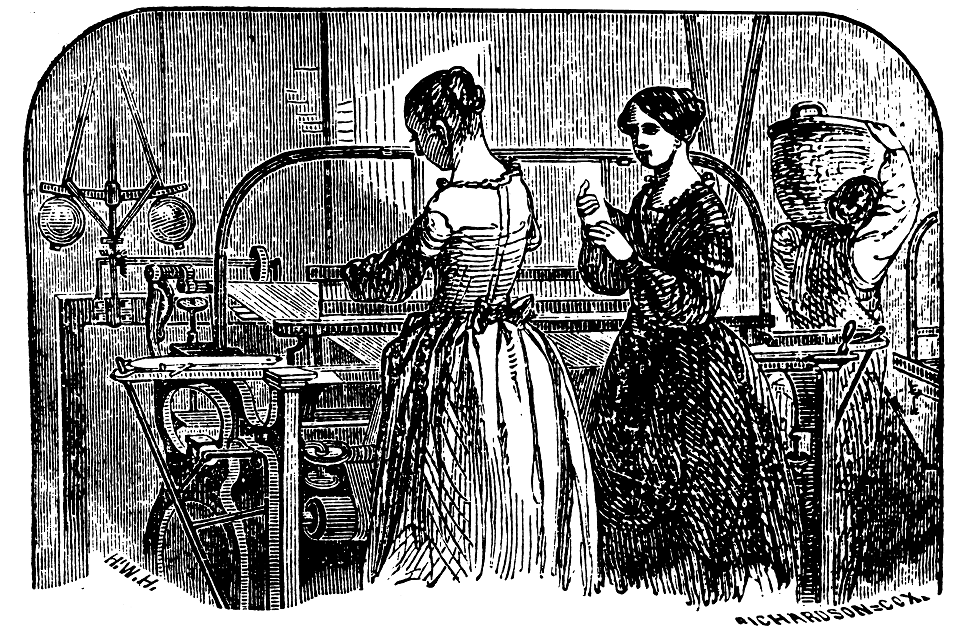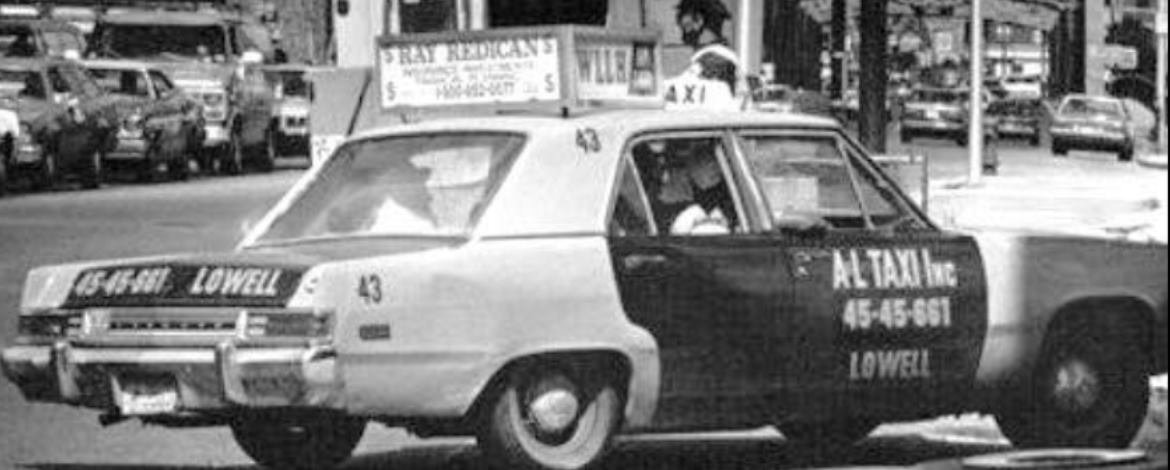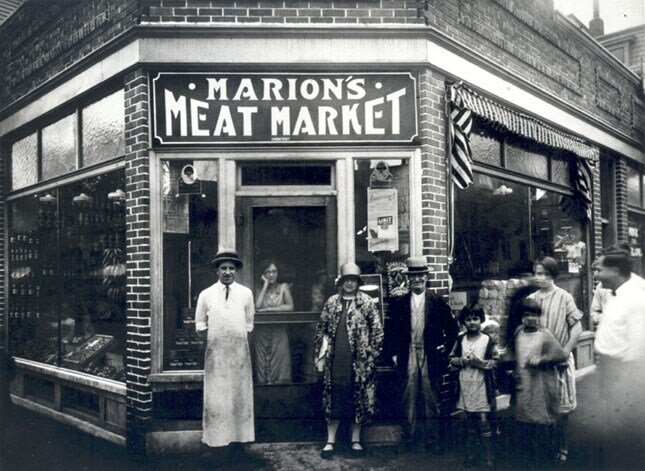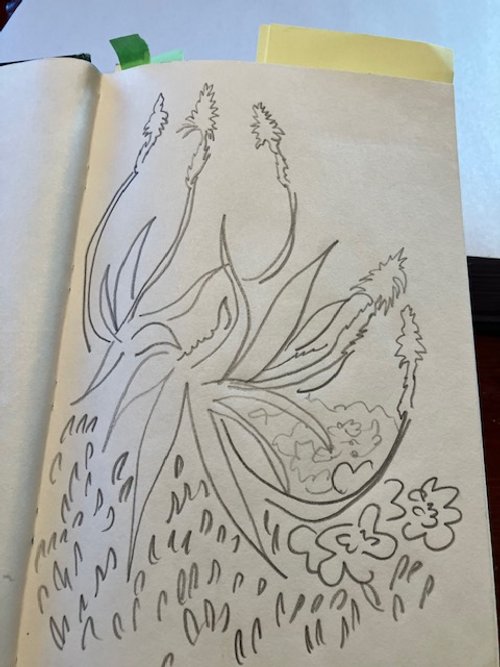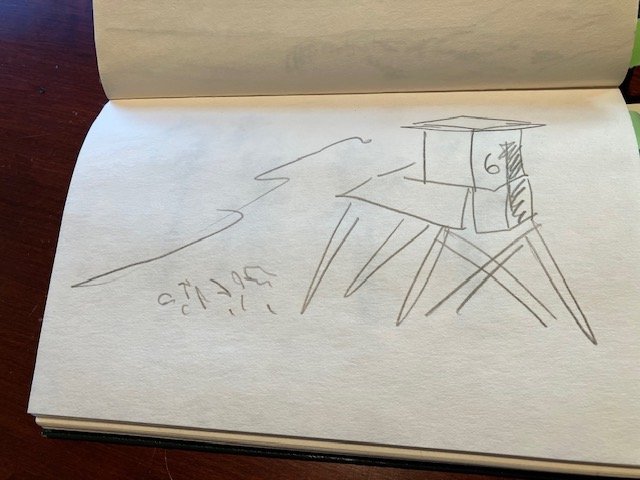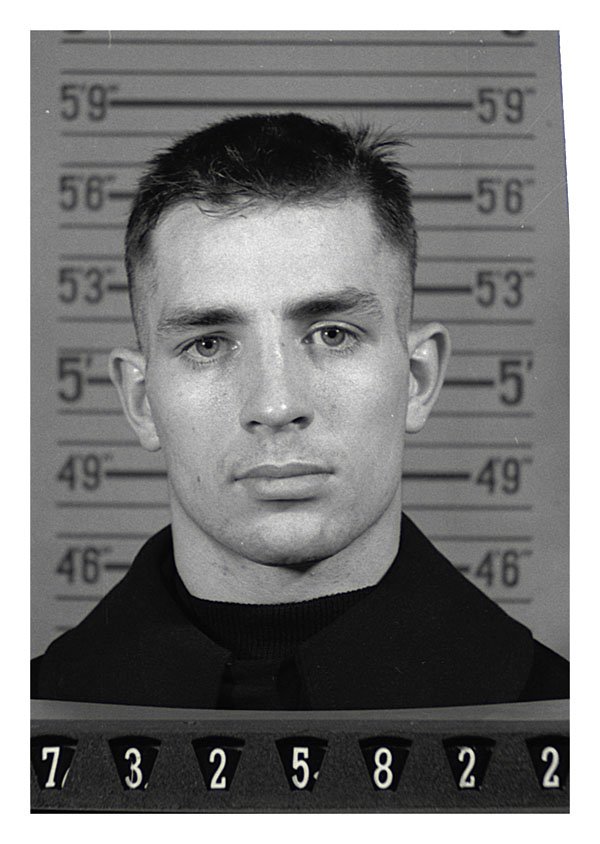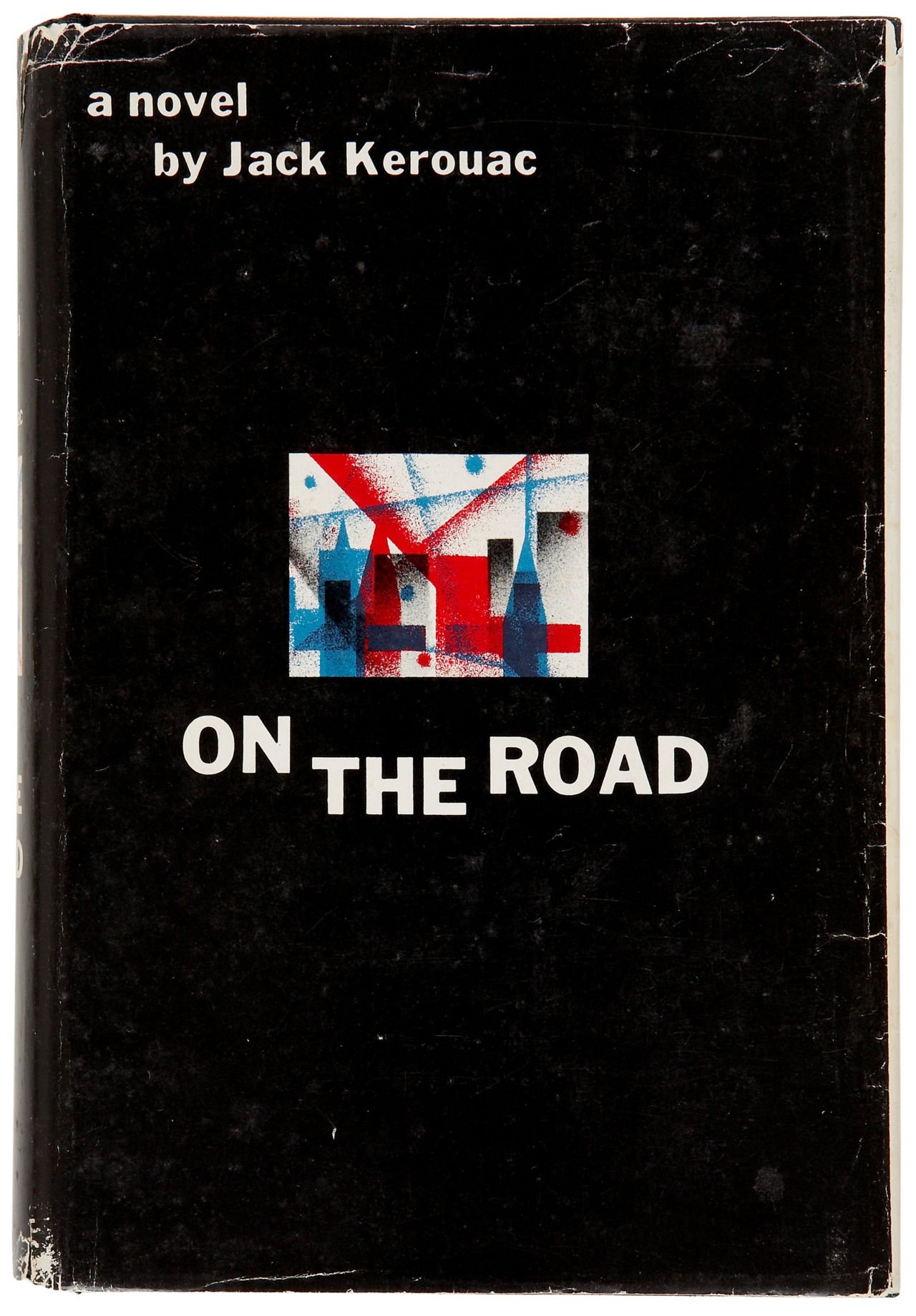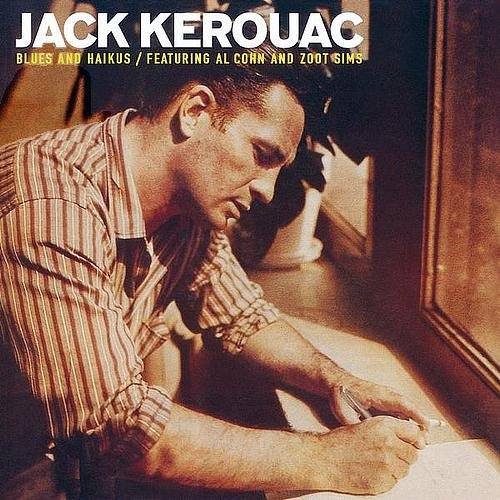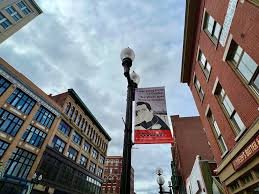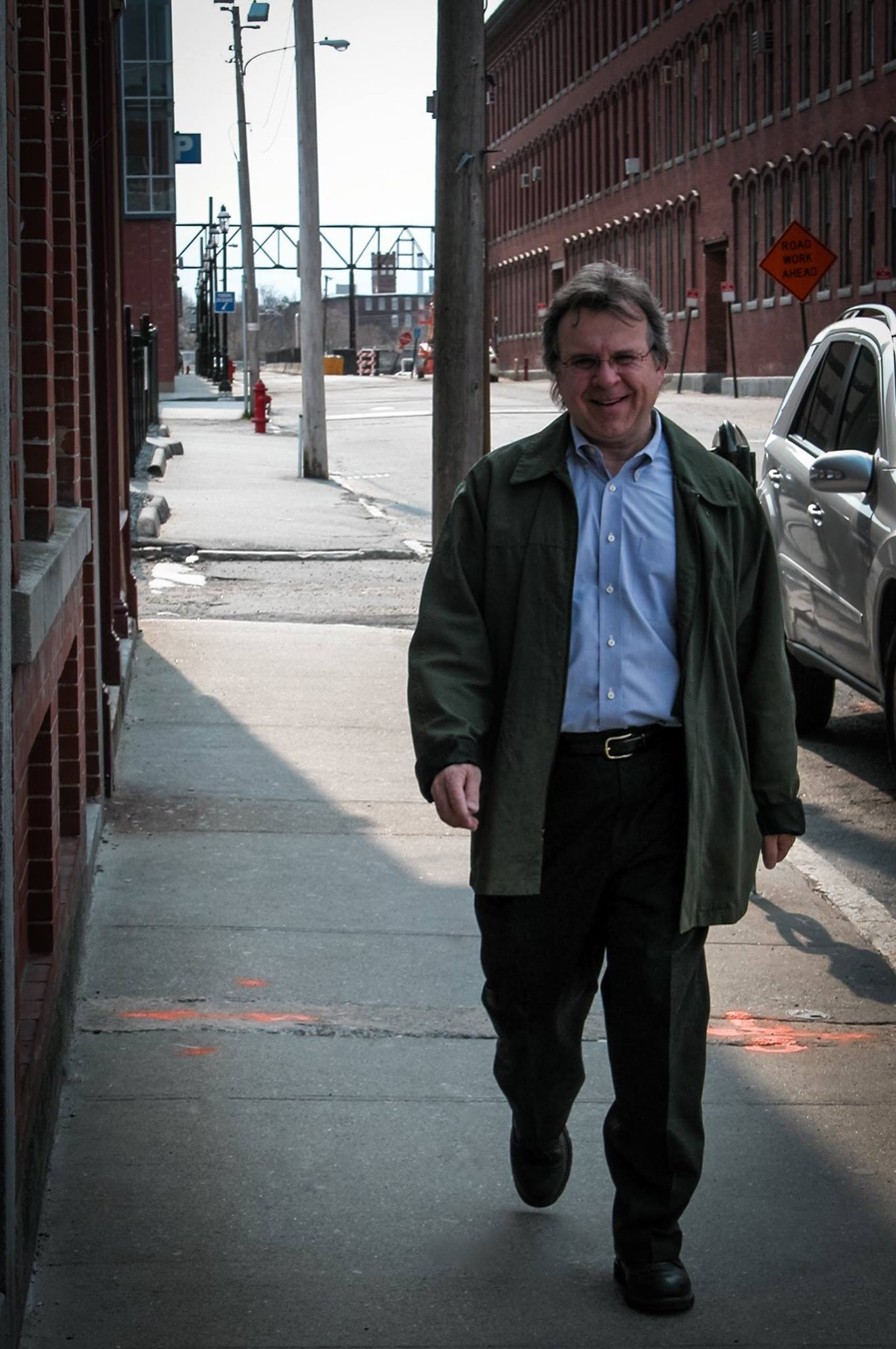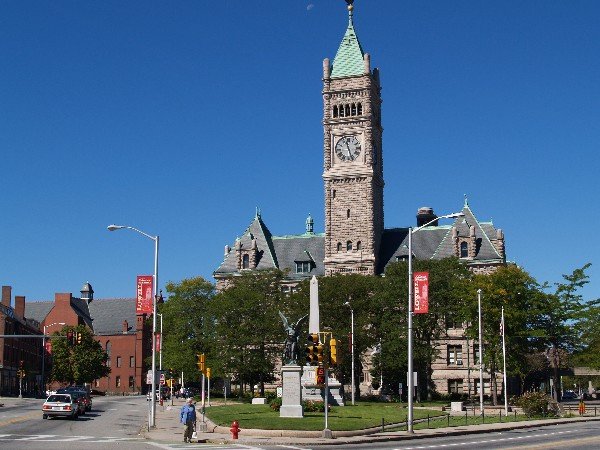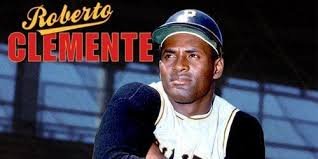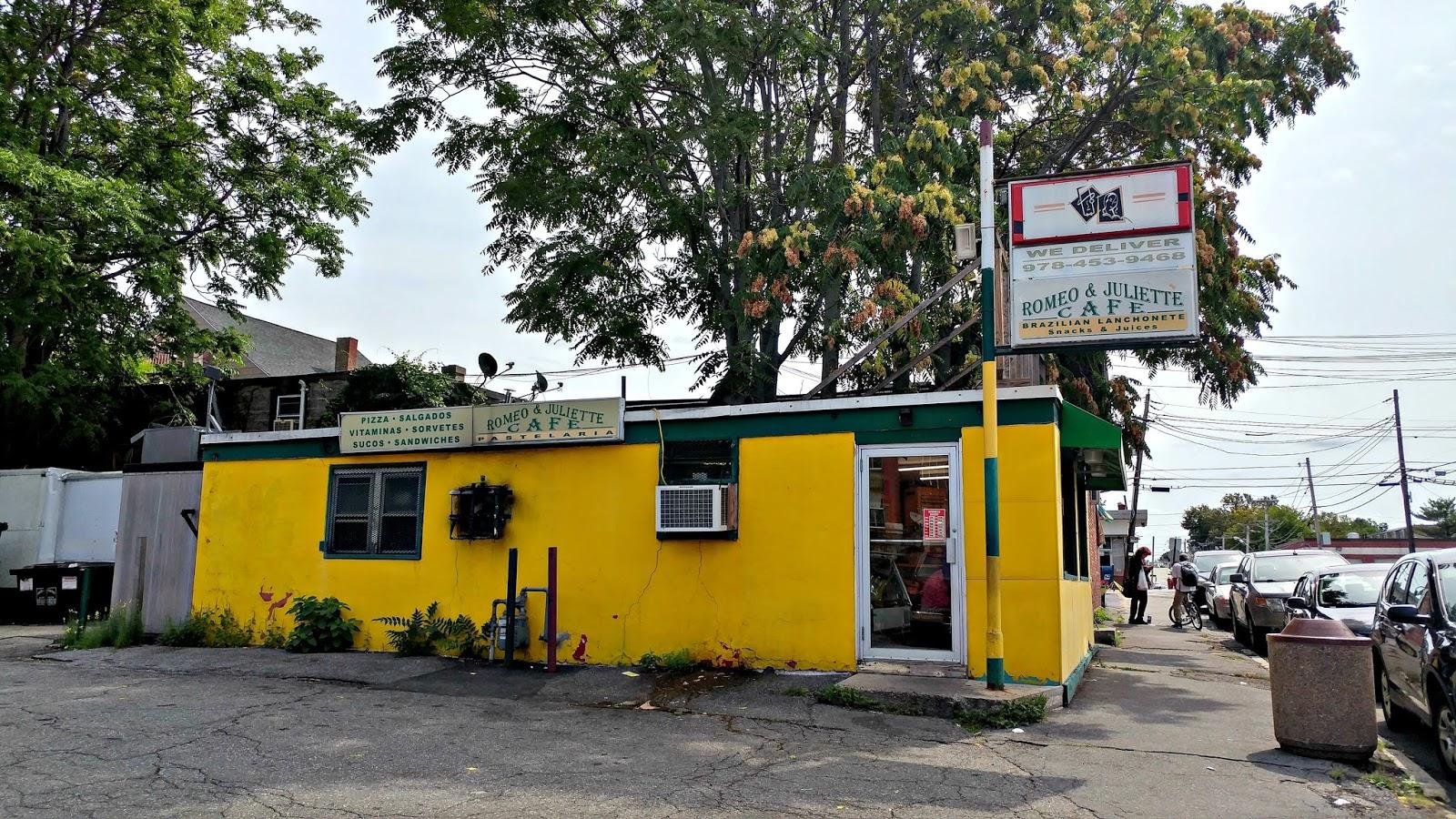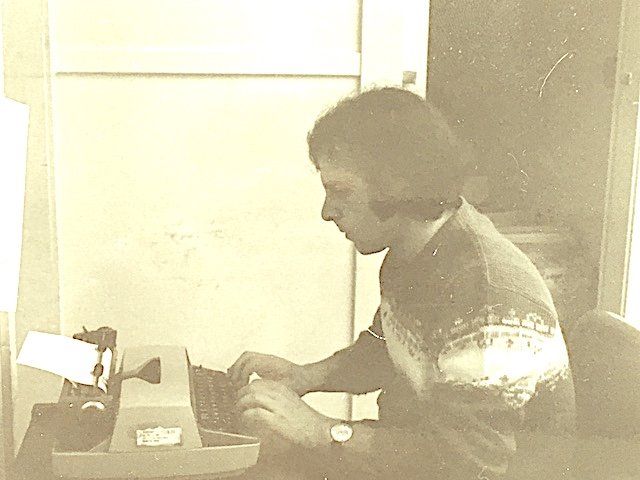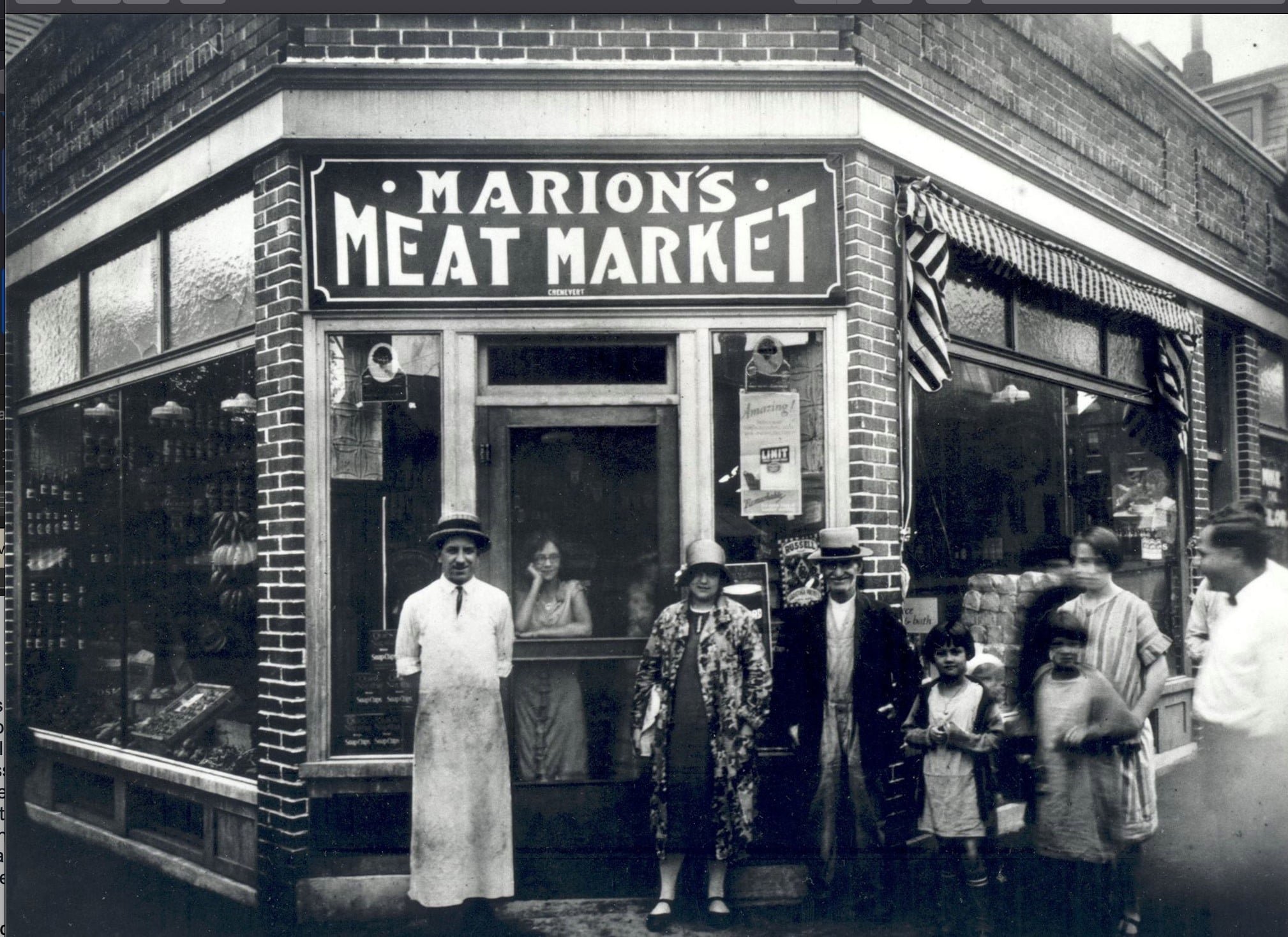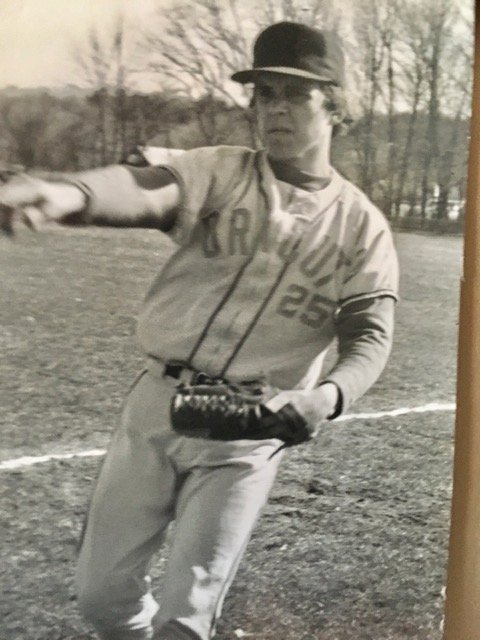“Here we are dealing with living traditions. We know that the urge to preserve is based on the fact that we know the things that we are passing on have value, and we want to hold on to them. So we try to build continuity and to show continuity. We try to have people understand each other, and use the performing arts as an educational tool in preservation.”
—Joe Wilson, Director, National Council for the Traditional Arts
There is no better day in contemporary Lowell than the last Saturday in July during the annual Lowell Folk Festival. This is the fulfillment day—the day when the vision of the park-makers is fully realized. In the core of the mill district, from the four-way canal junction at the Swamp Locks to the iconic Boott Mills clock-and-bell tower, people fill the open spaces between the red-brick blocks and animate the scene. They are Shakespearean players for a day on that historic stage, bringing their tens of thousands of American stories to the industrial fountainhead. People, not cars, own the street.
For long stretches, the festival-goer moves among the scores of restored buildings. The architectural fabric largely has been knit together—block after block painstakingly restored in synch with preservation standards applied by the city’s Historic Board. At every corner, from entryway to roofline, the discerning visitor perceives the beauty and skill evident in the curve of crafted woodwork or clean line of windowsills. For all their practical forthrightness, the downtown facades express an artisanal building vocabulary, not prefabricated construction muzak. The park has a cultural and visual theme without being pitched as a “theme park.” The scene is real instead of “Main Street” at Disney and an authentic “Adventureland” with a hint of “Tomorrowland” for people who want the good things that small cities offer.
Consulting architects, urban planning graduate students, economists, and historians brought reserves of intellect and imagination to the local advance guard of park proponents. For all their expertise, however, these outside experts did not draw a blueprint for what is arguably the most important creation of reclaimed Lowell. Not the oracle-like “Brown Book” report of the Lowell Historic Canal District Commission, not the unconventional General Management Plan of the National Park Service, not the pioneering Preservation Plan of the Lowell Historic Preservation Commission—none of these documents called for a peak annual event in which all the social and physical capital of the park would be combined with the force of a moon rocket. One of the largest events of its kind in the country, the festival draws tens of thousands of people to the city for three days of roots music and dance, ethnic food, and craft demonstrations on stages, sidewalks, and city greens throughout the historic district downtown. (Nobody really knows the attendance because there is no gate or admission fee, but crowd estimates exceed 100,000.)
The festival comes from somewhere to be sure. Its outline was not sketched on a paper dinner napkin like another of Lowell’s famed urban revival devices. From the 1970s on, the community’s ambition had been growing in regard to presenting cultural experiences. Today’s Lowell Festival Foundation is rooted in the Lowell Regatta Festival Committee organized in 1974 by restaurateur and Lowell booster Xenophon “Zenny” Speronis, business leader John Green, and journalist Richard “Dick” Taffe. Their original notion was to produce an event along and on the Merrimack River that would generate interest in Lowell businesses and raise the visibility of the then-Lowell Technological Institute rowing program (today’s UMass Lowell). Speronis described the impulse:
“The idea has its basis in the frustration of a businessman looking at the unused river all those years, the frustration of downtown businessmen realizing that the Dollar Day Specials weren’t going to compete with the shopping malls, and the frustration of the people of Lowell about things not moving quickly enough in a positive direction.”
Taffe knew the city has something special but undervalued in the river. “The Merrimack is the only river on the East Coast with a two-mile stretch upstream above a low-head dam without a major current.” He knew there was power boating at Lake Mead in the Southwest and water skiing in Fort Lauderdale, Fla. Could rowing be the next big thing for Lowell? One problem was the condition of the river, rated as one of the country’s most polluted at the time.
At Speronis’s Camelot-themed Speare House Restaurant on Pawtucket Boulevard on the river—on that long broad stretch described by Taffe—the trio brainstormed a plan for a few downtown events paired with Lowell Tech rowing events scheduled for May, August, and September 1974. “Within a matter of months we had three phenomenal festivals without a cloud in the sky and 80-degree weather.” The culmination was “Octoberfest,” attended by more than 100,000 revelers. They had planned a homecoming tribute for TV personality Ed McMahon, best known as Johnny Carson’s sidekick on the long-running Tonight Show. McMahon was from Lowell. Comedian Jerry Lewis headlined a parade, and singer Della Reese performed. What followed were large-scale outdoor events that demonstrated Lowell’s potential as a big arts and entertainment attraction. The committee’s success in highlighting the river and Lowell as a destination later helped make the case to Congressional leaders that Lowell had the potential for being a popular national park location. The Speare House was the preferred hospitality site when community leaders hosted state and national elected officials, urban specialists, and historians visiting Lowell to study the feasibility of an historical park in the city.
Between 1974 and 1990, according to its records, the Regatta Festival Committee produced or participated in more than 1,000 events. At its peak, the volunteer base numbered 400 people. From a community sailing program to charity efforts like Toys for Tots at Christmas, the group amounted to a blank check for community service. The call went out, and the helpers showed up like volunteer fire fighters. Each January, Speronis hosted a party for them at the Speare House.
The committee was an early partner of the park, providing services through a “cooperative agreement” that included, for a time, operation of the canal boats. In 1986, the committee helped save the summer boat operation after the contractor withdrew from the program on short notice. Park Superintendent Chrysandra Walter reached out to Speronis and the leaders of the Lowell Plan, Inc., who solved the problem and kept the tour boats on the canals. Speronis in 1990 received the National Park Service’s first North Atlantic Region Volunteer of the Year Award. Green later served on the Board of Directors of the National Council for Traditional Arts in Washington, D.C., by virtue of committee’s role in co-presenting the annual Lowell Folk Festival.
The high points of “Regatta” days were concerts on the river by the Boston Pops orchestra conducted by the charismatic Arthur Fiedler, known for his long white hair and penchant for fire engines. Tens of thousands of people would gather at the Charles G. Sampas Pavilion of Lowell Heritage State Park for rousing symphony performances that climaxed in Tchaikovsky’s 1812 Overture complete with cannon fire from the “Fiedler Battery” of the Army National Guard. The mid-section of Pawtucket Boulevard looked like Times Square on New Year’s Eve, prefiguring the vast crowds at the Lowell Folk Festival in the years ahead.
After the park opened its Lowell door in 1978, the Regatta Festival Committee (now Lowell Festival Foundation) helped park staff organize summer weekend fairs in Lucy Larcom Park, which borders a section of the Merrimack Canal. These fairs showcased traditions of one or another of the city’s 50-something different ethnic groups. The canal-side events were genuine, but small. As the park gained momentum, occupied rehabilitated buildings, and extended its public activities, the missing ingredient in its cultural operations was scale—the park needed to “go big,” as the Regatta group had done with some of its events.
There was another concern. Given how central the “human story” is to the historical narrative told by rangers, it was becoming increasingly clear by the mid-1980s that the park and community had to improve the presentation quality and substantive depth of the cultural heritage programs in the city. Lowell planners and administrators dealing with the park were not at first using the words “folklife” or “folklore.” The terminology in Lowell was “ethnic” and “multicultural” when referring to the heritage of the people. In 1976, the U.S. Congress established the American Folklife Center (AFC) at the Library of Congress with a mission “to preserve and present” the traditional culture of the nation. The Archive of Folk Culture at the Library dates from 1928, and holds a vast amount of ethnographic data. Here is folklife defined by the AFC:
“The story of America is reflected in the cultural productions of ordinary people who live everyday lives, from cooking and eating meals, to the activities of work and play, to religious observances and seasonal celebration. Folklife includes the songs we sing, the stories we tell, the crafts we make.”
When the AFC was preparing a yearlong Lowell Folklife Study in 1986, Patrick Mogan read its one-page mission statement. He chuckled: “These people stole all our ideas.”
Soon, partnerships with the American Folklife Center and the National Council on for the Traditional Arts (NCTA) offered Lowell, the park and the community, an opportunity to raise the bar for cultural heritage programs. Like preservation standards, the standards for community cultural presentations had to rise. Community arts activity has merit, but the level of action is more typically amateur or perhaps semi-professional. A nation—and Lowell was now a major-league cultural site—must aim for excellence in national cultural experiences. This does not mean working exclusively with paid full-time professionals, but it does mean that the practitioners should exemplify the highest level of achievement in their respective fields, whether that is an experienced local cook from the Portuguese national parish of St. Anthony’s in the Back Central neighborhood of Lowell or a visiting fiddle player from the Franco-American precincts of Maine.
There is also the quality of production to consider. Even at a free festival event, a visitor to a national park expects first-rate printed materials, an organized directional-sign system, high-quality audio and lighting equipment, informed program presenters, professional maintenance services, and well-trained production staff. The NCTA offered expertise and experience. The American Folklife Center, with its partner the Smithsonian Institution, had a record of success in producing the American Folklife Festival during the summer on the National Mall in Washington, D.C. With these collaborators, Lowell an opportunity to step up its game. All along the way, however, Mogan cautioned program managers and funders. He warned them that the worst outcome of bringing the park to Lowell would be turning Lowell people into spectators of their own culture. He wanted to cultivate local knowledge, talent, and skills.
In September 1986, park Supt. Walter led a four-person team from her staff and that of the Preservation Commission to Washington, D.C., to meet with Joe Wilson, director of the National Council on Traditional Arts (NCTA), and Vernon “Dave” Dame, chief of interpretation of the National Park Service. The purpose of the Lowell delegation’s visit was to convince Wilson to bring the National Folk Festival to Lowell for a three-year run.
The “National” rolls out a welcome rug of traditional music, dance, crafts, and storytelling with talent scooped up from the Hawaiian Islands to East Harlem in New York City. The event originated in St. Louis, Missouri, in 1934, and moved around the country for the next few decades. In the 1970s and ‘80s, the National Folk Festival was produced at the Wolf Trap National Park for the Performing Arts in Virginia and Cuyahoga Valley National Park in Ohio. In 1986, it had been staged in New York City to mark the restoration of the Statue of Liberty.
Wilson at the time knew just about every folk artist in the country. For decades, he traveled the blue highways and multi-lane freeways from coast to coast on NCTA business, talking to Cajun accordion players in the bayous, blues guitarists in the Carolinas, and dairy farmer-poets in Vermont. Wilson talked about the National like nobody else:
“The National Folk Festival is a concept first of all. It’s a belief in our country—its ability to serve a plural society. It’s a belief that the traditional arts and folk groups that make up our country are not going to die out, but that they will continue into the centuries ahead. …We take artists who have been playing in their living rooms and on their back porches and for their families and neighbors and we put them up on a big stage and turn lights on them here where ethnography meets show business.”
Both Wilson and Dame embraced the idea of taking their cultural camp meeting to the still-new national park in Lowell. Notwithstanding the formidable industrial history in Lowell, some grassroots park supporters in the city claim it really exists as a tribute to the positive contributions made by the peoples of various ethnic and racial identities to the character of our United States—their labor being notable, but their humanity more so. Public Law 95-290 of the 95th Congress, the act establishing Lowell National Historical Park, acknowledges Lowell to be the “most significant planned industrial city in the United States” in the first item under Findings and Purpose; the second item reads: “the cultural heritage of many of the ethnic groups that immigrated to the United States during the late nineteenth century and early twentieth century is still preserved in Lowell’s neighborhoods.” In those words is the justification for the Lowell Folk Festival.
Not quite a silent partner to the initial collaboration, but someone whose role is infrequently acknowledged is the former congressman who represented Lowell in the late 1980s, Chester G. “Chet” Atkins of Concord, Mass. His former aide, Steve Conant, remembered that Atkins encouraged this Washington-Lowell alliance and, as a member of the Appropriations Committee of the U.S. House of Representatives, he wielded important influence on behalf of Lowell’s building and program developments.
With the NCTA’s commitment secured, Walter assembled a steering group in Lowell, put together more than $100,000, and began shaping what would be Lowell’s largest street party in memory. When the National kicked off in late July 1987, the park and Lowell had their “big bang” event, and every astute observer knew immediately that this venture was a keeper. Right off, the festival felt like a signature event, one that could define the city going forward. Like the interlacing canals that converted the force of flowing river water to power for machines that turned raw cotton into bolts of cloth, the festival channels the expressive tributaries of the American experience into an urban-set performance and exposition whose end product is inspiration.
The Lowell Folk Festival, under that name, grew organically from the three Nationals in Lowell. In that first year of the Lowell Folk Festival, local banks alone contributed some $200,000 to the cause. Lowell’s festival is considered one of the most successful of the progeny of the National Folk Festival. The annual production has doubled as a laboratory for community partnerships, an area in which Lowell is now considered a distinguished model. Today, the festival is presented by Lowell National Historical Park, the City of Lowell, the Lowell Festival Foundation, Greater Merrimack Valley Convention & Visitor Bureau, Greater Lowell Chamber of Commerce, and the National Council for the Traditional Arts. As the centerpiece of the city’s cultural calendar, the festival has created a perception of Lowell as a “festival city,” bolstered by annual events such as the Southeast Asian Water Festival, Jack Kerouac Literary Festival, New England Quilt Festival, and Winterfest. The annual budget now exceeds $1 million ($450,000 cash from presenters and sponsors and the rest from donations in-kind). The festival is a true joint venture and would not be possible without the tens of thousands of dollars contributed by the co-presenters and sponsors from the private and public sectors, as well as personal contributions by friends of the festival and donors at the event. City departments provide police and maintenance support. Volunteers organized by the Lowell Festival Foundation give of themselves, helping with everything from stage set-up to guest services. The effort goes year-round to ensure an A-1 production each July.
The downtown business community embraced the festival, so much so that a “fringe festival” became a potent attraction starting in the mid-2000s. Every pub and eatery owner who can fit tables on the sidewalk outside the door and afford to hire a brace of folksingers says “game on” for the weekend. When the festival stages close down for the night, the party moves inside until closing time.
“We’re a great stew of many different cultures, and we put it all together in this festival so people can sample a little bit of where everybody in this country comes from,” Walter said. Her work and life achieved splendid harmony after she married one of the stars of the early festivals, master musician Seamus Connolly. (Among other accolades, Connolly is the unmatched ten-time winner of the Irish National Fiddle Championships.) Sandy Walter died in 2011 after a long illness.
Each edition of the Lowell Folk Festival offers surprises. Veteran attendees reminisce about the instantly classic appearance by teen-aged Alison Krauss or the flying Celtic feet of Michael Flatley before he starred in “Riverdance.” Reviewing the 25th anniversary festival in 2011, Boston Globe arts writer Stuart Munro reported that he was “bowled over” by the surprising performances of the Boston-based Debo Band with guest singers and dancers from Fendika of Ethiopia. At the Dance Pavilion in the park parking lot behind Market Mills, Debo and friends likely softened the asphalt under the wooden dance floor with their super-hot, funky jazz-inflected Afro-pop sounds. They had hundreds of people moving every which-a-way and clapping on-and-off rhythm under what felt like a revival tent. Big blasts of golden horns, peppery runs on accordion keys, drumbeats that thumped in chest cavities, driving guitar licks, and jet-powered singing—all this from 15 artists making one grand sound.
A person wants to see something new when walking around the festival, whether a close-up view of a man carving a wooden duck decoy or a different brand of banjo playing. When Fendika’s lead singer, Melaku Belay, ecstatically shook in place at the climax of one of the group’s towering numbers, most of those gathered around witnessed something new. It was “eskista,” a traditional trance-dance of Ethiopia whose moves are the roots of breaking and popping—and the Harlem shake. He was like strawberries in a musical blender revving at top speed. When he peaked he just stopped and threw his arms wide. Everybody was spent.
Fendika had CDs for sale, but a plastic disc would not transmit anything close to what the crowd had experienced. The “live” aspect of the festival is the winning ingredient. The Quebe Sisters might make for pleasant listening on Prairie Home Companion radio waves, but a person has to lean on the black-iron fence at 1824 St. Anne’s churchyard to soak up their harmonies for full effect. The same goes for The Rhythm of Rajasthan performers with their lush music from northern India and the gospel-singing Birmingham Sunlights of Alabama, both of whom enchanted audiences at Boarding House Park against the brick front range of the Boott Cotton Mills at the 25th festival.
The festival has become as much a delight for “foodies” as for music fans. At the Foodways Tent in 2011, Dorothy “Dottie” Naruszewicz Flanagan of Lowell and Carol Matyka of Boston taught onlookers how to make a favorite Polish-American food, pierogi or pierogis (because nobody can eat just one). Popular at Christmastime, they are on the menu in all seasons. These dumplings can be filled with cabbage and sauerkraut or a mixture of cheese, onions, and potatoes. “Every culture has its own version of this food, like Italian ravioli, Chinese pot stickers, and empanadas,” Matyka noted. Other specialties included Pennsylvania Dutch chicken corn noodle soup, cold Cambodian noodle salad, and Jewish noodle kugel: the topic was “pasta and noodles around the world.”
Pauline Golec received a Lifetime Volunteer Award from the park in 2010. With a laugh, Golec explained, “When I was told about it, I wondered if someone knew something about my future that I didn’t know—did it mean that my life of volunteering would soon be over or that I had to volunteer forever? Oh, well.” She was recognized not only for her work as a museum teacher at the Tsongas Industrial History Center, but also for service as “Ethnic Chair” of the Lowell Festival Foundation. As Ethnic Chair she coordinates the small army of community volunteers who staff the food booths. In 2009, the organizations that do the food presentations and sales were recognized with a Cultural Heritage Award from the National Park Service, presented to the Lowell Festival Foundation on their behalf.
Golec has been part of festival activities since the first Regatta Festival in May 1974. Asked what got her to the proverbial volunteer table, she said, “Ethnic pride, and I had friends who were involved, plus I love this city—and I’m a teacher.” For most of that time she held a dual role as co-chair of the Lowell Polish Cultural Committee. She remembers walking Massachusetts Governor Michael Dukakis around the Polish Festival at Lucy Larcom Park one year in the mid-1980s. Golec also chairs the Festival Foundation Scholarship Committee, which makes awards to high school seniors or college students. In honor of the 25th anniversary of the Lowell Folk Festival, scholarships were presented to three young people who themselves have volunteered at the Polish, Filipino, and Burmese food booths.
Janet Leggat’s involvement with the Regatta Festival Committee and later the Lowell Festival Foundation dates from 1988. She has been a volunteer, a part-time manager, a full-time executive director, and is now a member of the board of directors. Her sister, the late Susan Leggat, was involved in Regatta Festival Committee activities from the start, eventually joining the park staff as an administrative assistant and then events specialist. Susan left for a year in the early 1980s, joining former Lowell park Superintendent Lew Albert at Cuyahoga National Recreation Area in Ohio. She was back in a year later. Janet recalled her sister’s vision:
“Susan and Joe Wilson had such a clear idea of what the festival should be. Lowell is the most successful spin-off of the National Folk Festival. Some things like the logistics are better handled by the local partners, but the National Council for the Traditional Arts is highly knowledgeable about the talent—they ensure the integrity of the artists. The local ethnic food component, organized for years by Pauline Golec, has given the festival a distinctive character. A lot of people look forward to eating on that weekend.”
Peter Aucella, assistant superintendent of the park, called Susan “the conscience of the festival,” saying, “She made sure it retained its integrity and didn’t become a circus. You couldn’t believe the cockamamie ideas she had to listen to. It is what it is because of her.”
Susan’s friend Marie Sweeney remembered Sue’s “happy warrior” qualities:
“The pride she took in her job and in the many organizations she joined and supported was classic. Who could say ‘No’ to her when she asked for help or to buy a ticket or asked you to join a board or committee or to be a festival volunteer? It wasn’t for her, but for her cause, she’d say. But we did it for her, too. She was a pioneer and a role model for all of us, but especially for young women . . . . She had a strong will to do what was right—and to do it in the right way. She had a touch of kindness about her even when she had to say, ‘Not appropriate for this festival’ or ‘No, they can’t sell t-shirts’ . . . She helped make Lowell not just a place, but a ‘community’ of people working together for the good of all.”
Speaking to local video-documentary producers Ruth Page and Scott Glidden, Joe Wilson used a folksy metaphor in reflecting on culture and the preservation of traditional arts in America:
“It’s possible to think of the structure of culture in the United States today as an ice cream sandwich. Up at the top you have received culture that is transmitted through conservatories and great institutions. You have ballet here and symphony music and all the great works of the Western World. There was a time, a few centuries ago, when you only had this level of culture, elite culture, and all the rest of culture was folk culture, the thing that working folks did for their own enjoyment, the thing that they played for themselves and handed down through their families and communities. But a century or so ago, we started manufacturing culture. We started making records and books and other things that were sold en masse, and so we have popular culture now or mass culture, the middle part of our ice cream sandwich.
“Folk culture is made by institutions, too, but small institutions. The family is the main institution of folk culture, and it’s not created to make money. Sometimes people become professionals who do these things, but they do these things because they’re good, and because they’re beautiful, and because they should be passed on.”

